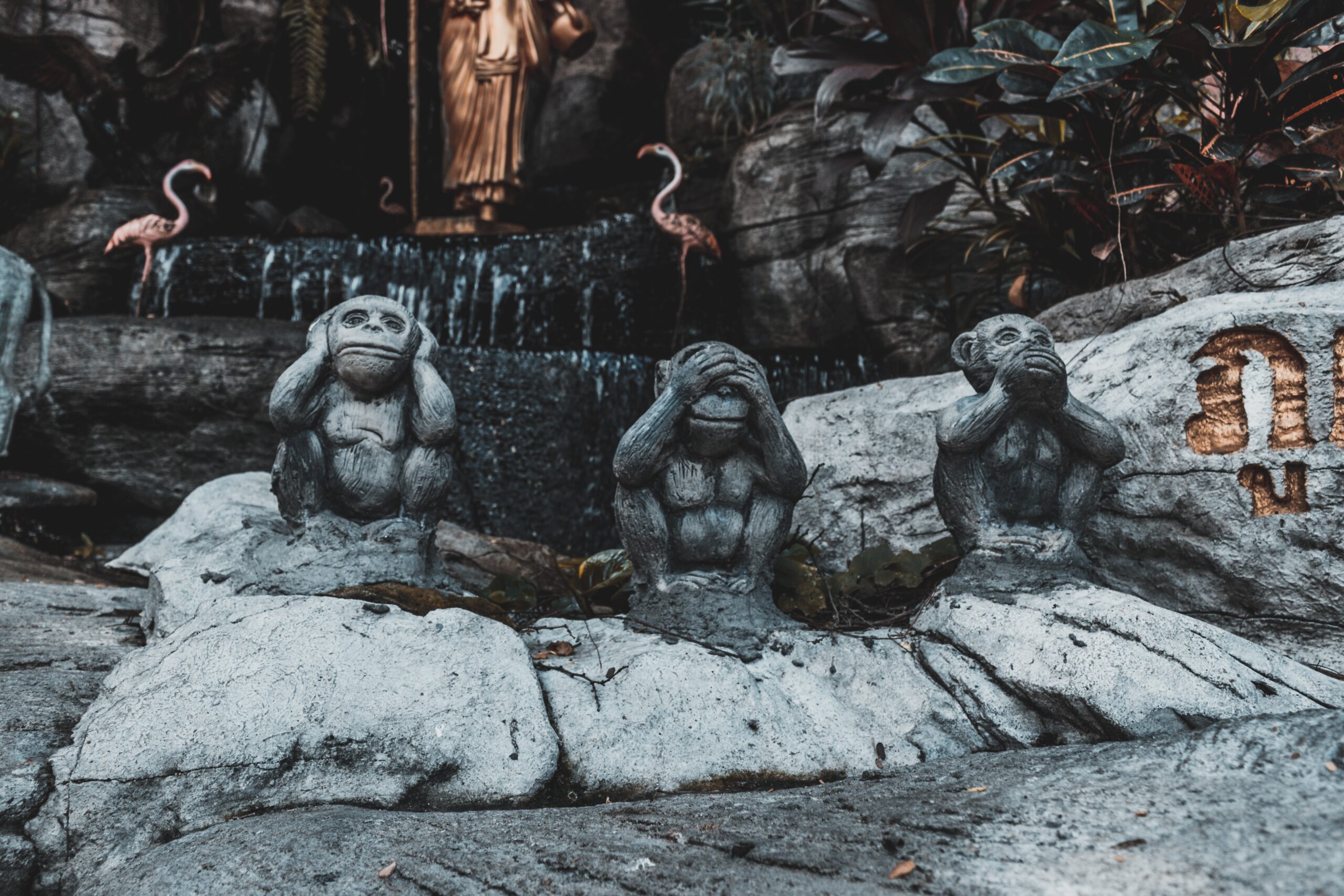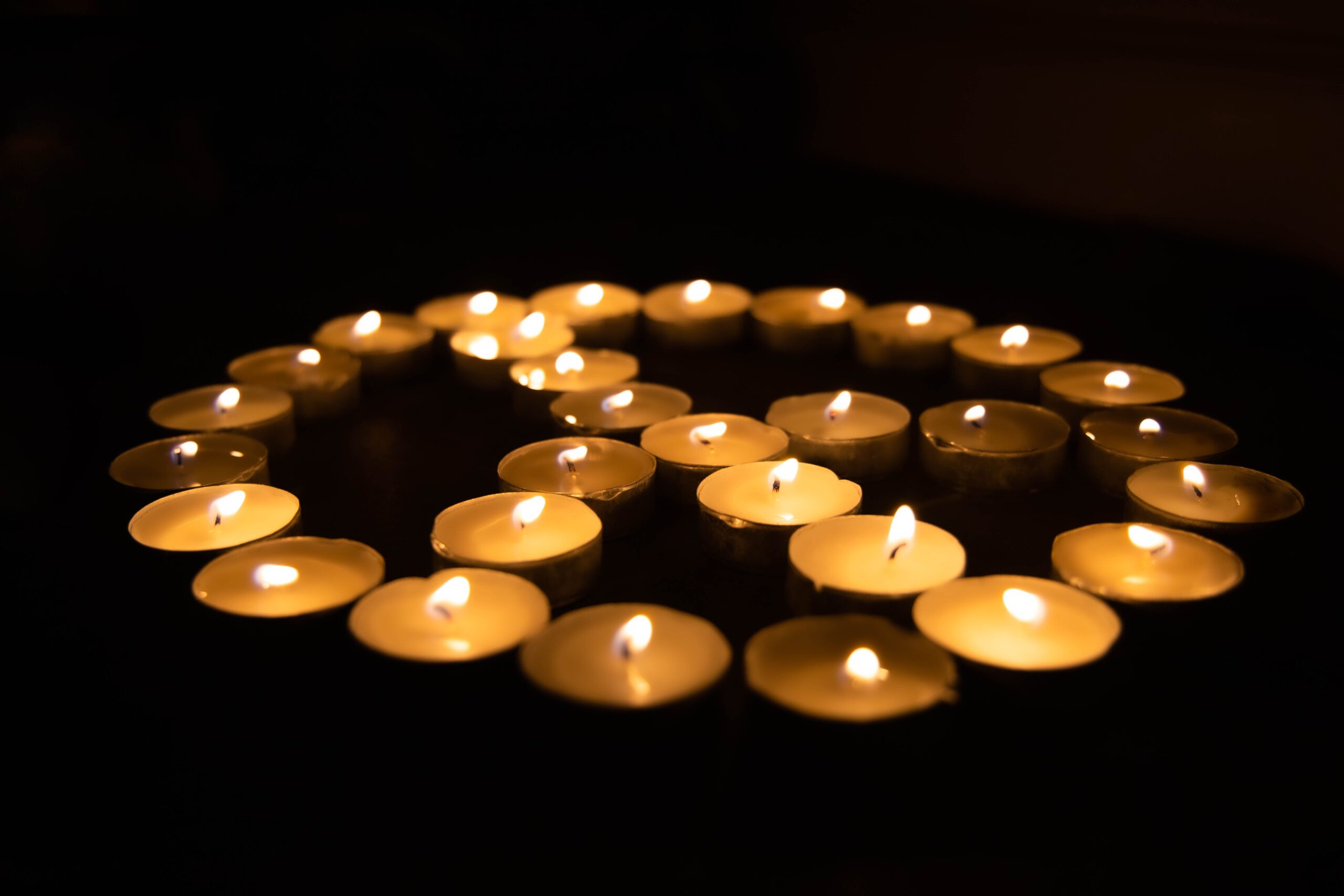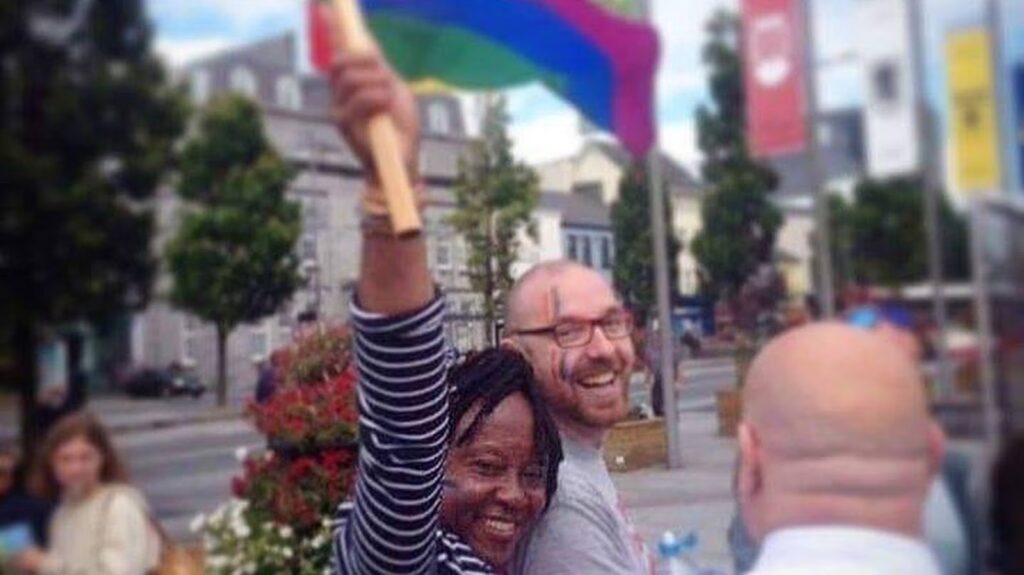The Zaru Effect May Explain US Law Enforcement’s Persecution of Trans Women
Abstract
This article explores the issue of state-sanctioned violence against trans women in the United States of America (hereinafter “United States”) and argues the enactment of violent policies in the nation exacerbates discrimination and violence towards trans women.
An argument made in this article is law enforcement’s transmisogynistic ideology prevent trans women from receiving the protection and consideration warranted by law. This is what I call the Zaru Effect, a sociological theory that states law enforcement officers will fail to protect victims of violence if they are transgender. Lastly, I expound on the United States failure to provide for specific criminal legislation that would punish law enforcement’s unlawful conduct in this area of research and propose merging the Yogyakarta Principles into United States legislation.
Keywords
Qualified immunity, state-sanctioned violence, trans panic defense, transmisogyny, Yogyakarta Principles, Zaru Effect.
Trans Women and Transmisogyny
Trans women are defined as a group of women who were assigned male at birth. It is often said that trans women face particular oppressions at the intersection of their transness and their womanhood (Edward, 2019, p. 293) and are subjected to majority of the gendered violence under patriarchy (Edward, 2019, p. 280). This oppression and gendered violence is cleped “transmisogyny.” If one builds on Stark’s (2020) explanation of misogyny, then it follows that transmisogyny is a property of social systems wherein noncompliant trans women are subjected to various kinds of hostility. According to Stark, this persecution enforces certain cisheteropatriarchal norms and demand that trans women be castigated for ‘pretending’ to be women.
This oppressive ideology further exposes trans women to bullying, harassment and a high risk of violence from private actors. For example, a recent study showed majority of trans participants experienced an extremely high proportion of violence due to their gender identity or presentation (Arayasirikul, et al., 2022). Studies further illustrate violent private actors use terms as ‘shemale’ to mark trans women. The ‘shemale’ inference categorize trans women as a subset of gay men rather than of women. The term also marks trans women for violent conduct, given the historical fact that trans people experience ostracism and violence (Canada, 2022).
Persecution of Trans Women
Since 2013, trans women comprised of 85% of the 302 victims of fatal violence in the United States (Lenning, Brightman, & Buist, 2020; HRC, 2022). In 2022, they constituted 81% of the 32 trans persons killed (HRC, 2022). Evidence seems to indicate the discrimination and violence that Black trans women experience is exacerbated by the intersection of racism and sexism. Indeed, the HRC’s report converges with Arayasirikul et al. (2022) findings that Black trans women are mostly affected by violence (Carpenter & Marshall, 2017).
Blaming the Victim
In keeping with Stark (2019), a suspect may concede that he did something harmful to the victim but maintain that the trans victim brought the incident upon herself. For example, he may say: “Why was ‘he’ wearing makeup?” “Why did ‘he’ have breast?” “Why was ‘he’ behaving like a woman?” The defect attributed to the trans victim is a character flaw: ‘he’ had it coming because ‘he’ is a liar—a promiscuous and reckless liar. Such testimony charges trans women for expressing a gender identity. It is further used to prosecute trans women on the spot for ‘provoking’ a violent reaction.
Even when private actors react violently to trans women, their testimony against the trans woman exonerates them, given that male law enforcement officers often view their testimony as more credible. According to Stark (2019), trans women who contacted law enforcement after a violation of their rights were not taken seriously. This contention is supported by Carpenter and Marshall (2017), who reported law enforcement officers failed to respond to situations where trans victims report instances of domestic or intimate partner violence (p. 9). When trans women find themselves in situations where law enforcement officers fail to protect them because they are transgender, they are experiencing the Zaru Effect.
The Definition of the Zaru Effect
The Zaru Effect is when law enforcement officers ignore the allegations made by trans women, while accepting as true, the allegations made by men or other individuals.
The word ‘zaru’ is derived from the Three Exemplary Monkeys: Mizaru, who sees no evil; covers his eyes. Kikazaru who hears no evil and covers his ears. Lastly, Iwazaru who speaks no evil and covers his mouth (Aston, 2018). See no evil and speak no evil is integral to the discussion because law enforcement officers often ignore and rarely speak up against the legal and moral wrongs perpetuated against trans women. Hear no evil is also vital, given law enforcement officers often minimize the complaints and harmful experiences of trans women. Thus, the Zaru Effect happens when law enforcement officers:
(1) close their eyes to harms perpetuated by private actors against trans women;
(2) arrest trans women for making complaints (Carpenter & Marshall, 2017, p. 9), and
(3) fail to speak out against abuses that either causes the physical and sexual assault, or the incarceration and death of trans women.
Another element of the Zaru Effect is gaslighting. Gaslighting occurs when law enforcement officers deny, on the basis of another’s social identity, the trans woman’s testimony and the harms or wrongs done to her (Stark, 2019). It is also a form of testimonial injustice, wrongful manipulation and emotional abuse (Stark, 2019). Gaslighting further places a barrier between trans women and law enforcement officers, and justifies the wrongs perpetuated against her by private and state actors (Carpenter & Marshall, 2017, p. 9).
Each element of the Zaru Effect prevents trans women from receiving the protection and consideration warranted by law. While this may be so, this article makes no argument that all trans women will experience the Zaru Effect.
The Zaru Effect May Explain US Law Enforcement’s Persecution of Trans Women and How They Use Other Ideologies to Oppress Them
Violent Ideologies, Tropes or Prejudicial Archetypes Used to Define Trans Women
There are several violent ideologies, tropes and prejudicial archetypes society used to define trans women. Lenning, et al. (2020) defines “violent ideologies” as those which carry the belief that a group of people (i.e., trans women) are less than or unequal to a dominant group. One violent ideology is that trans women are “deceivers” because they are successful in their gender role. Violent ideologies such as this justifies and results in discriminatory and exclusionary policies and laws like the Trans Panic Defense (“TPD”), which I will expound on later.
A. Julia Serano’s Deceptive Archetype
Another violent ideology is what Julia Serano calls the “deceptive” archetype (McKinnon, 2014). According to McKinnon (2014), the deceiver trope portrays the trans woman as dominant and powerful; still full of “male” energy (McKinnon, 2014). As mentioned above, opponents argue trans women are “deceivers” because they may successfully “pass” as women. In their view, no one can easily determine her trans status without the trans person revealing herself (McKinnon, 2014). While some opponents may argue that trans women are not women but male parodies of women arrogantly performing a shallow femininity, this assertion reduces all trans women to an inaccurate monolith of femininity (Edward, 2019). It also vilifies all feminine women as agents of patriarchy reinforcing stereotypes, trans or otherwise (Edward, 2019). Should a trans woman’s history be discovered, the ramification is to ‘out’ her as a man emulating a woman, which has negative and even devastating consequences for trans women (Canada, 2022).
B. Tropes
Evidence further indicates law enforcement officers ‘slut shame’ and stereotype trans women as being sex workers. Stark (2019) compared the experiences that Black, Latino, Native American and White trans women had with law enforcement, and found trans women of color (Black, Latino, and Native American) were slut shamed, not taken seriously and labelled sex workers more often (Stark, 2019, p. 557). Law enforcement’s slut shaming of trans women marks them as different and as of lower status. Further, it marks them as deserving of disrespect and mistreatment (Canada, 2022). In my opinion, it associates the trans victim with a disdained and abject identity—that of the slut—an archetype of failed womanhood (Canada, 2022).
C. Law Enforcement’s Use of the Archetype
An important issue emerging from the findings above is that it is likely that male law enforcement officers think trans women are stealthy and “hiding” their trans status (McKinnon, 2014). If law enforcement is of the view that a trans woman’s ‘deceptiveness’ led to violent conduct, they are more likely to remain inactive and less likely to investigate complaints made by trans women. This renders the complaints made by trans women null and void: the complaint is no longer about the original violent conduct; it’s about what law enforcement perceives to be deceptive. Based on this suggestion, law enforcement will not act on the complaint. On reflection, I am inclined to say this is why trans women are harassed and not given the protection and consideration that is commensurate with their vulnerability to violence.
D. What Previous Statistics Show
Trans women regularly encounter transmisogyny in their confrontations with male law enforcement officers, which increase the likelihood of being denigrated, harassed, attacked, sexually assaulted and developing a criminal record.
It cannot be denied that trans women who seek assistance from law enforcement are often harassed by them (Carpenter & Marshall, 2017, p. 29). For instance, 38% of Black trans women reported being harassed by the police, where the overall rate of police harassment of trans people was reported at 22% (Carpenter & Marshall, 2017, p. 13; Stark, 2019, pp. 554-555). This makes trans women even more vulnerable to abuse, as they suffer from law enforcement officers’ transmisogynistic violence.
E. Black Trans Women and Law Enforcement
A growing body of survey-based evidence demonstrates that trans women, and particularly Black trans women, are not given the protection and consideration by law enforcement that is commensurate with their vulnerability to violence (Carpenter & Marshall, 2017, pp. 12-13).
As reported in Injustice at Every Turn: A Report of the National Transgender Discrimination Survey, 6 % of trans women reported that police have physically assaulted them, while 2% reported that police have sexually assaulted them. Assault by law enforcement officers were even higher for Black trans people, with 15% reporting physical abuse and 7% of them reporting sexual assault (Canada, 2022).
Although the United States has invested in public resources to address the mistreatment of trans people (Arayasirikul, et al., 2022), policies like the Trans Panic Defense (“TPD”)— when used directly or indirectly—increases discrimination and violence towards trans women.
Trans Panic Defense as Doctrinal Persecution
Perpetrators in several states can rely on the TPD doctrine to justify their violence toward trans women. The LGBT Bar defines TPD as a “legal strategy which asks a jury to find that a victim’s sexual orientation or gender identity is to blame for the defendant’s violent reaction, including murder” (Holden, 2020). While the TPD is thought to be applicable only in trial situations, a keen analysis of the literature used in this paper suggest there is an indirect use of the doctrine before an arrest or trial occurs. If we examine the attacks on LGBT people and how they are rarely prosecuted as hate crimes (Parker & Dwyer, 2016), we begin to understand how the TPD is being used to harm a vulnerable community.
Qualified Immunity as Doctrinal Persecution
Discriminatory laws, such as the Qualified Immunity doctrine (“QID”), also prevent trans women from receiving the protection and consideration warranted by law. The QID is a judicial doctrine that protects public officials from liability, even when they break the law (Schweikert, 2020). According to Schweikert (2020), the doctrine regularly denies justice to victims whose rights have been violated. It severely undermines official accountability, especially for members of law enforcement, and has been argued to have no valid legal basis. Further, this state-sanctioned doctrine emboldens state, federal and law enforcement officers to single out trans women and to commit violence against them (Lenning, Brightman, & Buist, 2020, pp. 153-154).
A. Its Difficult to Punish Law Enforcement Officers in the US
The United States government gives imprimatur to the maiming of trans bodies through the TPD and QID. Despite evidence showing law enforcement officers continue to single out trans women for violence, the United States Federal Government has failed to provide for specific criminal legislation that would make it easier to punish their unlawful conduct. This imprimatur codifies the violent and transphobic ideology into law and increases violent actions on an interpersonal level (Lenning, Brightman, & Buist, 2020, p. 153). As stated by Lenning, et al. (2020), violent laws reaffirm violent ideologies in the eyes of the public which, in turn, emboldens both private and State actors to take violent actions against the subjugated and marginalized groups in society (e.g. trans women), with little sense of culpability or fear of consequence (p. 153).
B. Trans Women as a Powerless Social Group
It is worth mentioning here that many trans women lack the power and means to prove to law enforcement superiors, attorneys and NGOs that the unfair or violent treatment she has experienced is occurring with regularity (Rodríguez-Roldán, 2021). Trans women are also less likely to afford legal counsel and have the necessary privilege to fight back criminal charges or false arrests (Rodríguez-Roldán, 2021). According to Rodríguez-Roldán (2021), a criminal record makes it more likely that a victim will encounter barriers and risks of violence.
TPD & QID Doctrines are Inconsistent With the Yogyakarta Principles
It is conceded that TPD and QID cannot, in itself, infringe upon human rights. However, when domestic policies or doctrines harm trans women, they violate international policies such as the Yogyakarta Principles.
According to Principle 30, trans women have a right to state protection. In other words, the United States must exercise due diligence to prevent, investigate, prosecute, punish and provide remedies for discrimination, violence and other harms, whether committed by State or non-State actors.[1]
The United States must also take effective measures to eradicate all forms of violence, discrimination and other harms.[2] It should also be mentioned that the United States must ensure trans women have access to effective complaints procedures and remedies, including reparations for victims of violence, discrimination and other harm on grounds of their gender identity and gender expression.[3]
Trans Women in International Law
Human rights bodies have consistently held that domestic legislation and policies may violate protected rights. To be sure, in Rodriguez v. Uruguay, the Human Rights Committee (“HRC”) argued that legislation can violate the Convention, regardless of whether it is enforced in a particular case.[4] While trans women can submit a petition in state and federal courts for the violation of their rights in the United States, many petitions never result in a remedy.
Further, in Velásquez Rodriguez v. Honduras, the Court said “…the free and full exercise [of] a legal system…requires the government to conduct itself so as to effectively ensure the free and full exercise of human rights.”[5] In terms of due diligence, the Special Rapporteur Yakin Ertürk (2006) remarked that States cannot delegate its obligations, even where the State outsources functions to other actors. While it may not be sufficient for trans women to only show the United States violated her human rights, it is observed that trans women may be able to establish the government failed to apply diligent measures even though it had knowledge of a particular risk.
For example, in Vicky Hernández v. Honduras, the Inter-American Court of Human Rights (“IACHR”) found that the victim’s death occurred in a context of discrimination based on prejudice that included police violence against trans persons, especially trans women who were survival sex workers.[6] Hernández’s case further showed a resistance on part of the State to investigate forms of fatal violence against trans women.[7]
There are endless cases like Hernández’s in the United States that I believe warrant international oversight. To ensure trans women have access to legal remedies, the United States must strongly consider becoming a party to the IACHR. It must also consider merging Principle 30 of the Yogyakarta Principles into federal legislation.
Conclusion
This article explored the Zaru Effect, which explained how law enforcement officers ignore—and rarely speak up against the legal and moral wrongs perpetuated against trans women. It further showed how the Zaru Effect is vital to the discussion of state violence and inaction, by virtue of law enforcement’s minimization of trans women’s complaints.
It was argued that the enactment of violent policies in the United States exacerbates discrimination and violence towards trans women, and showed how doctrines such as the TPD and QI oppress trans women and bar them from legal redress. On the whole, this article highlighted the failure of the United States to provide for specific criminal legislation that would punish law enforcement’s unlawful conduct, and proposed that the State adhere to Yogyakarta Principles and join the IACHR.
Footnotes
[1] Yogyakarta Principles, Principle 30 (A)
[2] Id., Principle 30 (B).
[3] Id., Principle 30 (J)
[4] Rodriguez v. Uruguay, Decision of 19 July 1994, Communications No. 322/19888, UN Doc. CCPR/C/51/D/322/1988, para. 12.4.
[5] Velásquez Rodriguez v. Honduras, Judgment of 29 July 1988, Series C., No. 4, para. 167
[6] IACHR, Report no. No. 157/18, Case 13.051, Merits, Vicky Hernández & Family v. Honduras, December 17, 2018, para. 108
[7] Id.
References
Arayasirikul, S., Turner, C., Trujillo, D., Sicro, S. L., S. S., McFarland, W., & Wilson, E. C. (2022). A global cautionary tale: discrimination and violence against trans women worsen despite investments in public resources and improvements in health insurance access and utilization of health care. International journal for equity in health, 21(1), 1-11.
Aston, W. (2018). Transactions and Proceedings of the Japan Society, London. Hawthrone: Palala Press.
Canada, Q. (2022). Out of the Miqlaatun Into the Fire: The Shariazation of Ireland’s Direct Provision Institution and its Impact on Transgender Asylum Seekers. SSRN, 1-35. doi: https://papers.ssrn.com/sol3/papers.cfm?abstract_id=4080296
Canada, Q. (2022). Report on the United States: Racial Discrimination Against Sexual Minorities in the United States of America. Cork: Quianna Canada, available at: https://quiannacanada.com/wp-content/uploads/2022/11/Quianna-Canada-Report-on-US.pdf
Carpenter, L. F., & Marshall, R. B. (2017). Walking While Trans: Profiling of Transgender Women by Law Enforcement, and the Problem of Proof. Willam & Mary Journal of Women and the Law, 24(1), 5-38.
Edward, H. M. (2019). The A–Z of Gender and Sexuality: From Ace to Ze. Philadelphia: Jessica Kingsley Publishers.
Ertürk, Y. (2006). The Due Diligence Standard as a Tool for the Elimination of Violence against Women. UN Doc. E/CN/4/2006/61.
Holden, A. (2020, March 31). The Gay/Trans Panic Defense: What It is, and How to End It. Retrieved from American Bar Association: https://groups/crsj/publications/member-features/gay-trans-panic-defense
HRC. (2022). An Epidemic of Violence 2022: Fatal Violence Against Transgender and Gender Non-Conforming People in the United States in 2022. Human Rights Campaign. Retrieved from https://reports.hrc.org/an-epidemic-of-violence-2022
Lenning, E., Brightman, S., & Buist, C. L. (2020). The Trifecta of Violence: A Socio-Historical Comparison of Lynching and Violence Against Transgender Women. Critical Criminology, 151-172.
McKinnon, R. (2014). Stereotype threat and attributional ambiguity for trans women. Hypatia, 29(4), 857-872. doi:https://doi.org/10.1111/hypa.12097
McLaughlin, H. U. (2010). Sexual Harassment, Workplace Authority, and the Paradox of Power. American Sociological Review, 77(4), 625-647.
Parker, N., & Dwyer, M. (2016, June 28). Special Report: Attacks on LGBT people rarely prosecuted as hate crimes. Retrieved from Reuters: https://www.reuters.com/article/us-florida-shooting-hate-crimes-specialr-idUSKCN0ZE25X
Rodríguez-Roldán, V. M. (2021). Like a Candle Flickering in the Mist: Violence Against the Trans Community. In E. M. Lund, C. Burgess, & A. J. Johnson, Violence Against LGBTQ+ Persons: Research, Practice, and Advocacy (p. 115). Cham: Springer.
Schweikert, J. (2020, September). Qualified Immunity: A Legal, Practical, and Moral Failure. Retrieved from CATO Institute: https://www.cato.org/policy-analysis/qualified-immunity-legal-practical-moral-failure
Stark, C. A. (2019). Gaslighting, Misogyny, and Psychological Oppression. The Monist, 221–235.



